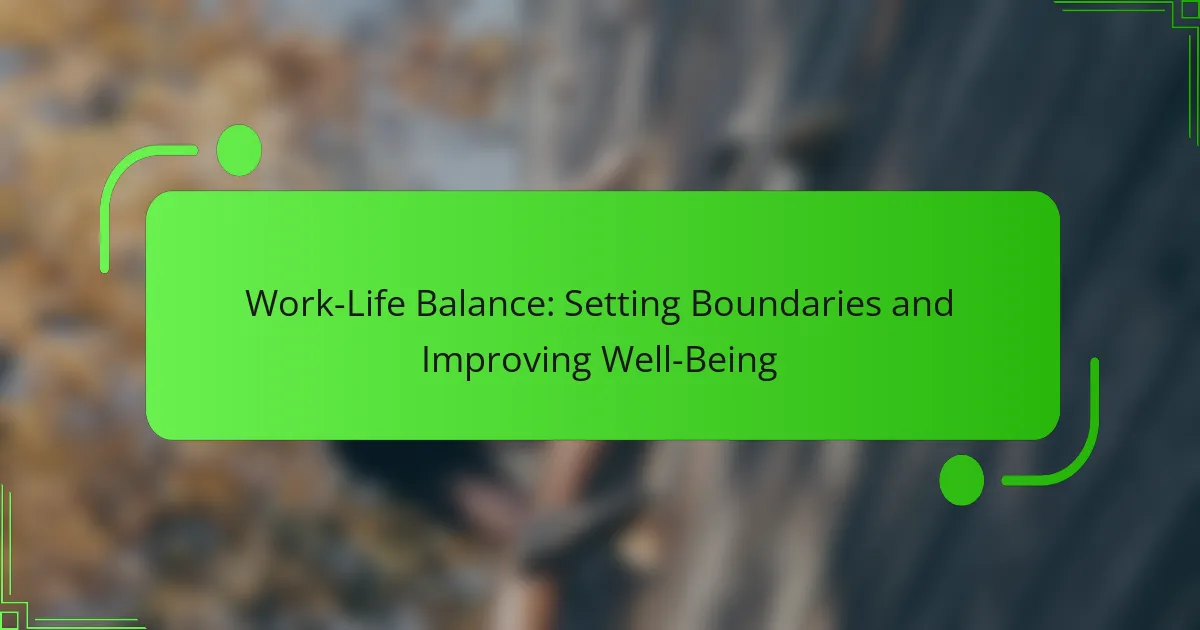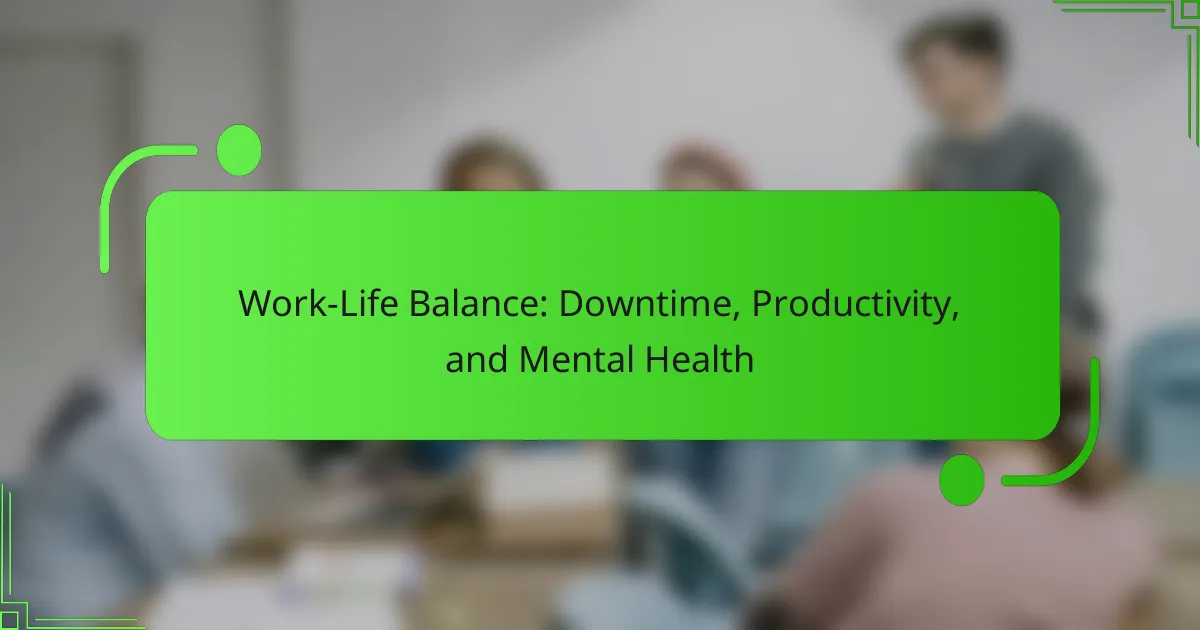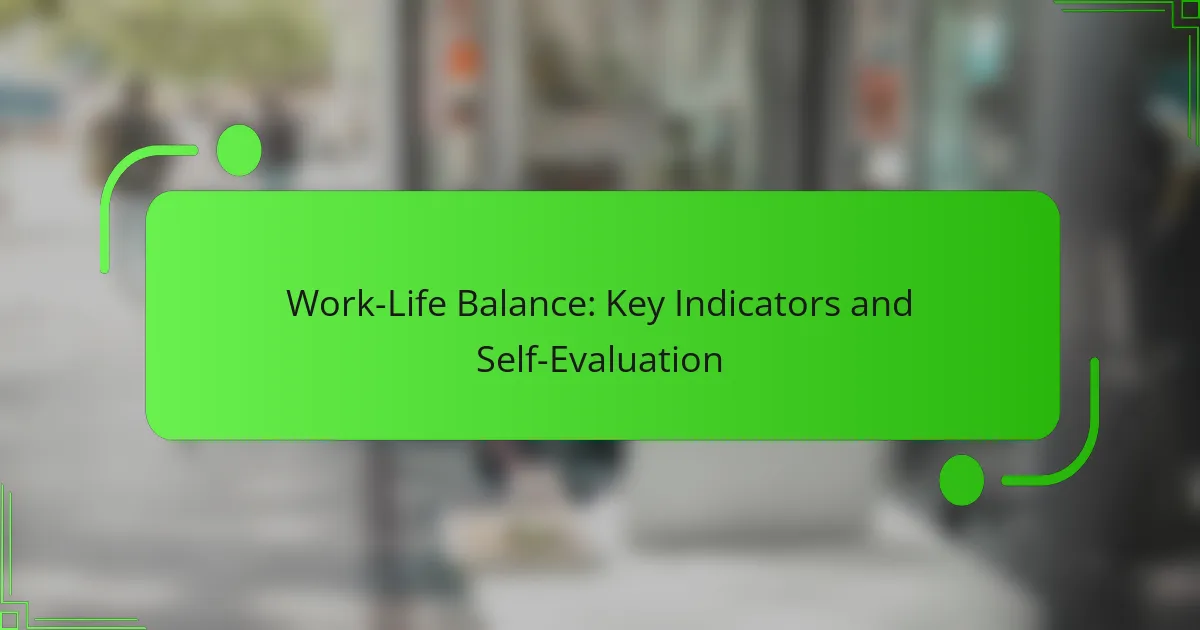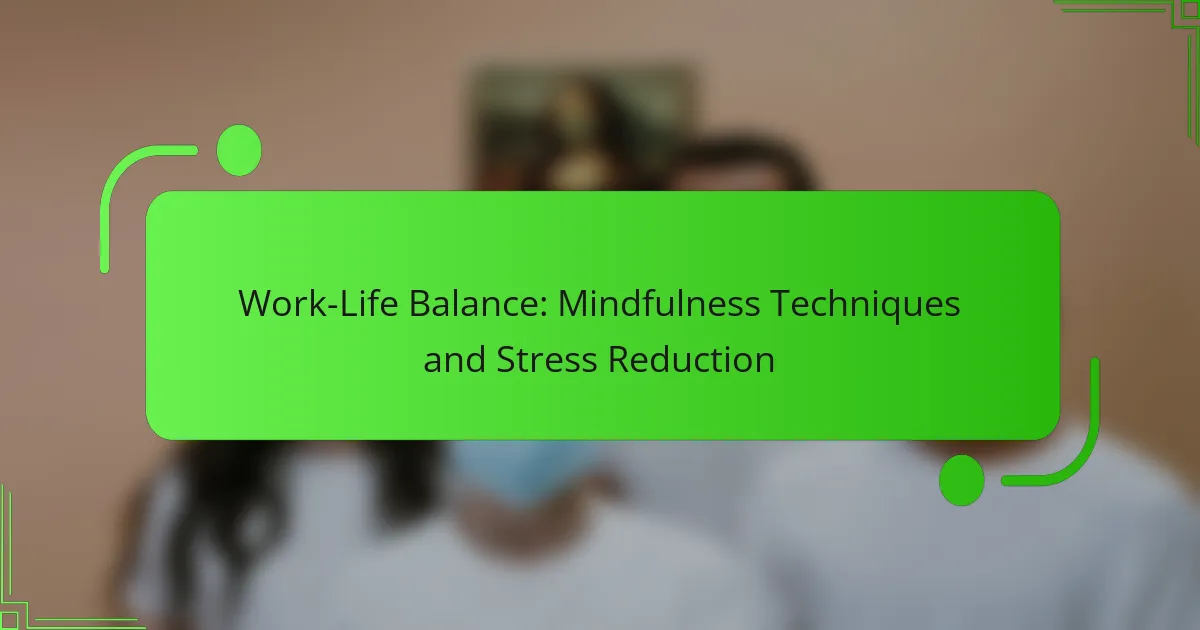Achieving a healthy work-life balance is essential for enhancing overall well-being and preventing burnout. By setting clear boundaries between professional and personal time, individuals can foster a fulfilling life that prioritizes both productivity and leisure. Incorporating strategies such as regular exercise, mindfulness, and social connections further supports mental and physical health, leading to a more balanced lifestyle.

How can you set boundaries for work-life balance?
Setting boundaries for work-life balance involves defining clear limits between professional and personal time. This practice helps prevent burnout and enhances overall well-being by ensuring dedicated time for both work and leisure.
Establishing clear work hours
Establishing clear work hours is essential for maintaining a healthy work-life balance. Designate specific times for starting and ending your workday, and stick to them as closely as possible. This consistency helps signal to yourself and others when you are available and when you are not.
Consider using a calendar to block out these hours and communicate them to your team. For instance, you might choose to work from 9 AM to 5 PM, allowing for a structured routine that promotes productivity while preserving personal time.
Communicating boundaries with colleagues
Effective communication of your boundaries with colleagues is crucial for respect and understanding. Clearly express your availability and preferred methods of communication during your designated work hours. This can include letting them know when you will respond to emails or be available for meetings.
Regularly remind your team of these boundaries, especially during busy periods. A simple message like, “I will be offline after 5 PM and will respond to messages in the morning,” can reinforce your commitment to work-life balance.
Using technology to limit work access
Utilizing technology to limit work access can significantly enhance your ability to maintain boundaries. Consider using apps or settings that restrict notifications outside of your work hours. For example, setting your email notifications to silent after hours can help you resist the temptation to check work emails.
Additionally, explore features on your devices that allow you to schedule “Do Not Disturb” times. This way, you can focus on personal activities without interruptions from work-related communications.
Creating a dedicated workspace
Creating a dedicated workspace is vital for separating work from personal life. Designate a specific area in your home for work activities, which can help mentally distinguish between work and leisure. This space should be organized and free from distractions to enhance focus and productivity.
Ensure that your workspace is comfortable and equipped with the necessary tools. This might include a proper desk, ergonomic chair, and adequate lighting, all contributing to a more effective work environment.
Practicing saying no
Practicing saying no is an important skill for maintaining work-life balance. Learn to decline additional tasks or projects that may overwhelm your schedule or infringe on your personal time. Politely asserting your limits can prevent burnout and ensure you have time for your priorities.
Consider using phrases like, “I appreciate the offer, but I currently have too much on my plate,” to communicate your boundaries effectively. This approach fosters respect from colleagues while protecting your well-being.

What are effective strategies to improve well-being?
Effective strategies to improve well-being include incorporating regular exercise, practicing mindfulness, maintaining social connections, prioritizing sleep hygiene, and engaging in hobbies. These approaches can enhance mental and physical health, leading to a more balanced and fulfilling life.
Incorporating regular exercise
Regular exercise is crucial for improving overall well-being. Aim for at least 150 minutes of moderate aerobic activity each week, such as brisk walking or cycling, combined with muscle-strengthening activities on two or more days. This routine can boost mood, reduce anxiety, and enhance physical health.
Consider incorporating short bouts of activity into your daily routine, like taking the stairs instead of the elevator or going for a walk during lunch breaks. Finding an exercise you enjoy can also increase adherence and make it easier to stick to a routine.
Practicing mindfulness and meditation
Mindfulness and meditation help improve mental clarity and emotional regulation. Start with just a few minutes each day, focusing on your breath or observing your thoughts without judgment. Gradually increase the duration as you become more comfortable.
Apps and online resources can guide you through mindfulness practices, making it easier to integrate them into your daily life. Regular practice can lead to reduced stress and increased focus, significantly enhancing your overall well-being.
Maintaining social connections
Strong social connections are vital for emotional health. Make an effort to nurture relationships with family and friends by scheduling regular catch-ups, whether in person or virtually. Aim for quality interactions that foster support and understanding.
Consider joining clubs or groups that align with your interests to expand your social network. Engaging with others can provide a sense of belonging and significantly improve your mood and resilience during challenging times.
Prioritizing sleep hygiene
Good sleep hygiene is essential for overall well-being. Aim for 7-9 hours of quality sleep each night by establishing a consistent sleep schedule and creating a relaxing bedtime routine. Limit exposure to screens and bright lights before bed to improve sleep quality.
Consider factors such as room temperature, noise levels, and comfort of your bedding to create an optimal sleep environment. Avoid caffeine and heavy meals close to bedtime, as these can disrupt your sleep patterns.
Engaging in hobbies
Engaging in hobbies can significantly enhance your well-being by providing a creative outlet and a break from daily stressors. Dedicate time each week to activities you enjoy, whether it’s painting, gardening, or playing a musical instrument. This can boost your mood and foster a sense of accomplishment.
Explore new hobbies to keep your interests fresh and exciting. Joining classes or groups related to your hobbies can also provide social interaction, further enhancing your overall quality of life.

How does work-life balance impact mental health?
Work-life balance significantly affects mental health by reducing stress and enhancing overall well-being. When individuals establish clear boundaries between work and personal life, they experience lower anxiety levels and improved emotional stability.
Reducing stress levels
Maintaining a healthy work-life balance helps reduce stress by allowing individuals to allocate time for relaxation and personal interests. Engaging in hobbies or spending time with loved ones can provide a necessary break from work-related pressures.
To effectively manage stress, consider setting specific work hours and sticking to them. This practice prevents work from encroaching on personal time, which can lead to a more relaxed state of mind.
Improving overall happiness
A balanced approach to work and life contributes to greater happiness by fostering a sense of fulfillment in both areas. When individuals feel they have time for personal pursuits, they are more likely to experience joy and satisfaction.
Incorporating regular breaks and leisure activities into your routine can enhance your mood. Aim for a mix of work and play, ensuring that personal time is prioritized just as much as professional responsibilities.
Enhancing productivity
Work-life balance can lead to increased productivity by preventing fatigue and maintaining motivation. When individuals are well-rested and mentally refreshed, they tend to perform tasks more efficiently.
To boost productivity, try implementing time management techniques such as the Pomodoro Technique, which encourages focused work sessions followed by short breaks. This method can help sustain energy levels throughout the day.
Lowering risk of burnout
Establishing boundaries between work and personal life is crucial for lowering the risk of burnout. Without a proper balance, individuals may feel overwhelmed and exhausted, leading to decreased job satisfaction and mental health issues.
To prevent burnout, regularly assess your workload and personal commitments. If you notice signs of stress or fatigue, consider adjusting your schedule to include more downtime and self-care practices.
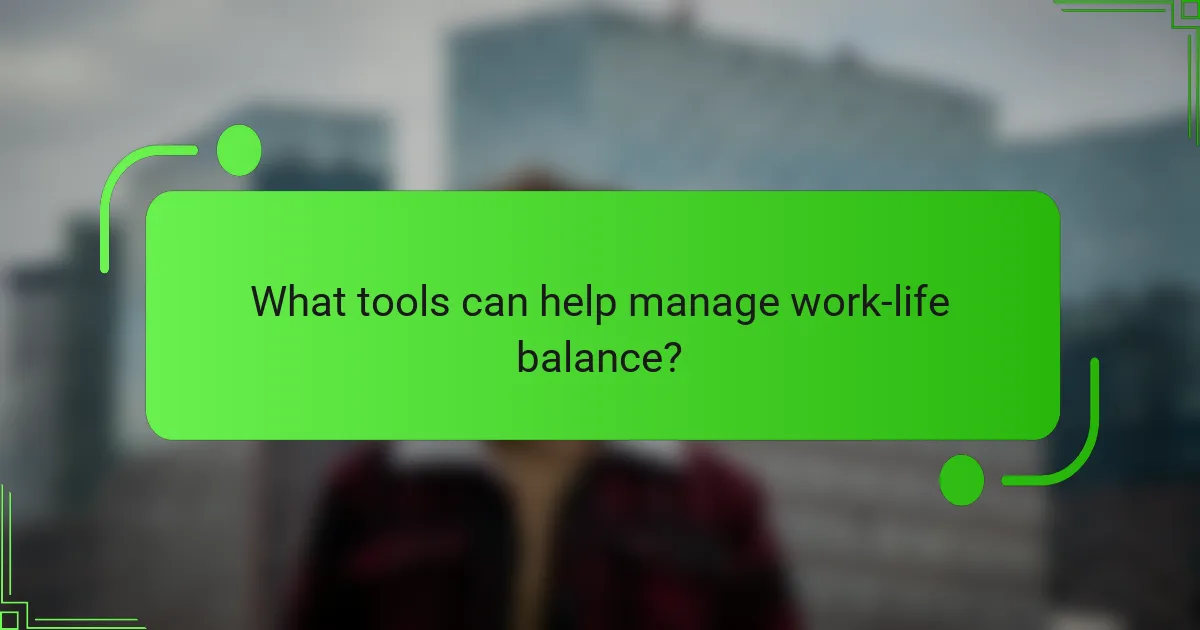
What tools can help manage work-life balance?
Several tools can effectively assist in managing work-life balance by helping individuals organize their time and prioritize well-being. Utilizing these tools can lead to improved productivity and reduced stress levels.
Time management apps like Trello
Trello is a versatile time management app that uses boards, lists, and cards to help users organize tasks visually. By breaking down projects into manageable pieces, it allows for clear prioritization and tracking of progress. Users can set deadlines and reminders, which can enhance accountability.
To maximize Trello’s effectiveness, create separate boards for work and personal tasks. This separation helps maintain focus and prevents overlap, ensuring that work does not encroach on personal time.
Calendar tools like Google Calendar
Google Calendar is an essential tool for scheduling and managing appointments, deadlines, and personal commitments. It allows users to create events, set reminders, and share calendars with others, which can facilitate better coordination with colleagues and family.
To improve work-life balance, block out time for personal activities and breaks in your calendar. This practice helps ensure that personal time is respected and not overlooked amidst work obligations.
Wellness apps like Headspace
Headspace is a wellness app focused on mindfulness and meditation, offering guided sessions that can help reduce stress and improve mental clarity. Regular use of such apps can promote a healthier mindset, contributing to a better work-life balance.
Incorporate short meditation sessions into your daily routine, ideally during breaks or after work hours. Even just a few minutes can make a significant difference in overall well-being and productivity.
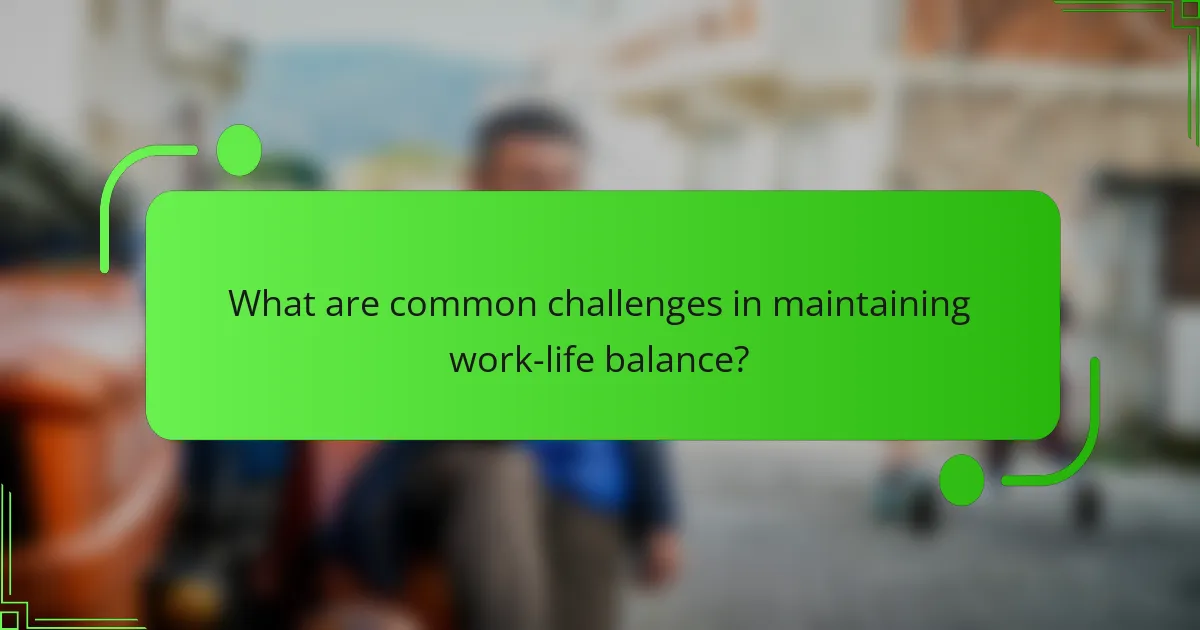
What are common challenges in maintaining work-life balance?
Maintaining work-life balance can be difficult due to various challenges that disrupt personal time and well-being. Common issues include remote work distractions, blurred boundaries between work and home life, and the pressure to be constantly available.
Remote work distractions
Remote work distractions can significantly hinder productivity and disrupt the balance between work and personal life. Common distractions include household chores, family members, pets, and digital interruptions from social media or notifications.
To manage these distractions, create a dedicated workspace that minimizes interruptions. Set specific work hours and communicate them to family or housemates to establish boundaries. Consider using tools like noise-canceling headphones or apps that block distracting websites during work hours.
Regular breaks can also help maintain focus. Aim for a short break every hour to recharge and refocus, which can improve overall productivity and reduce the temptation to engage in distracting activities.
